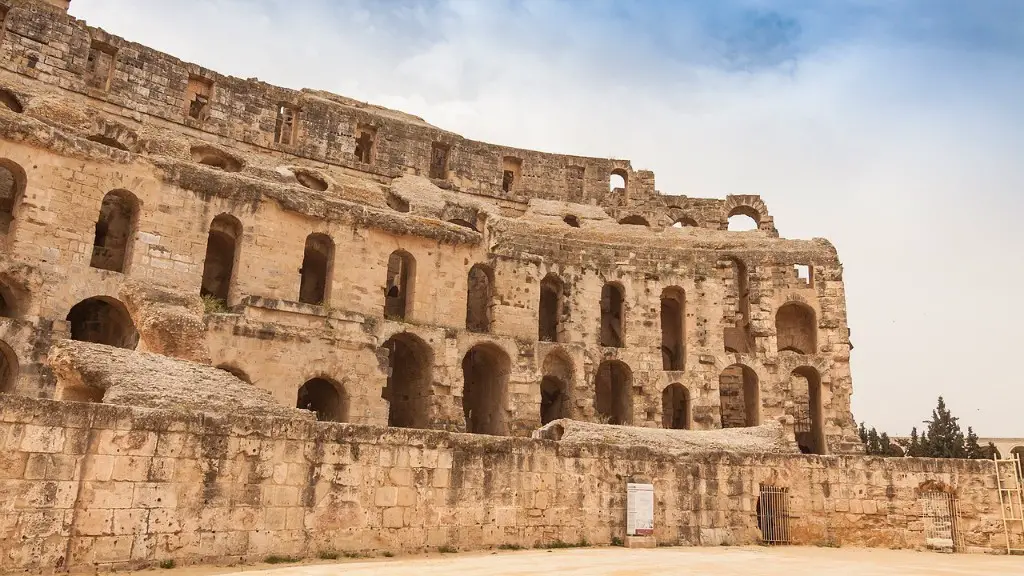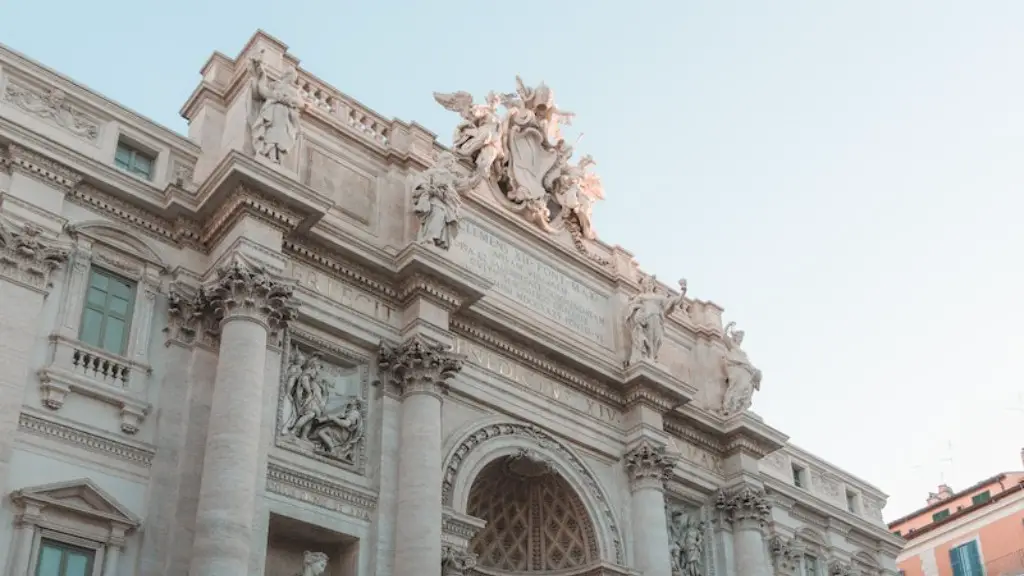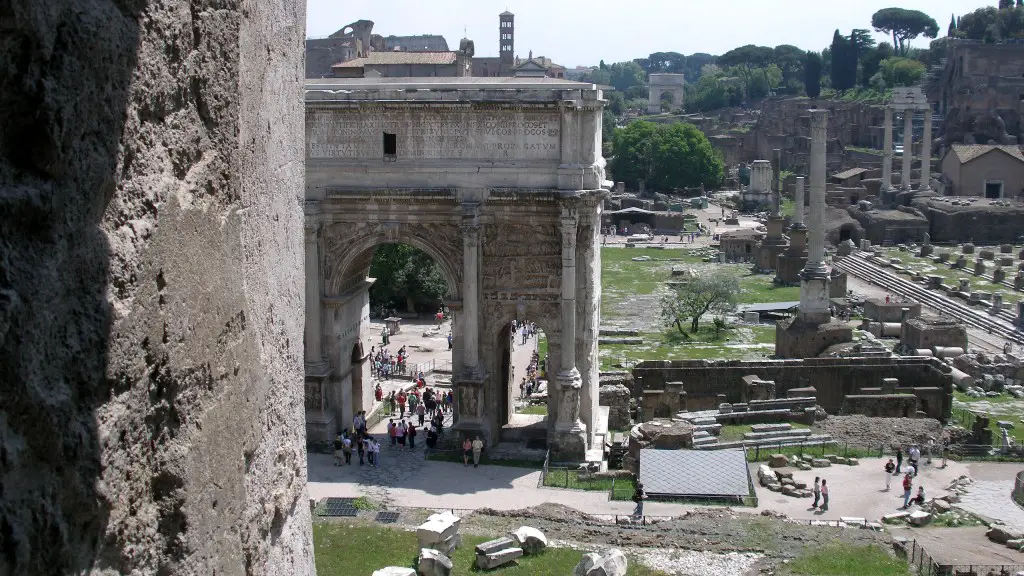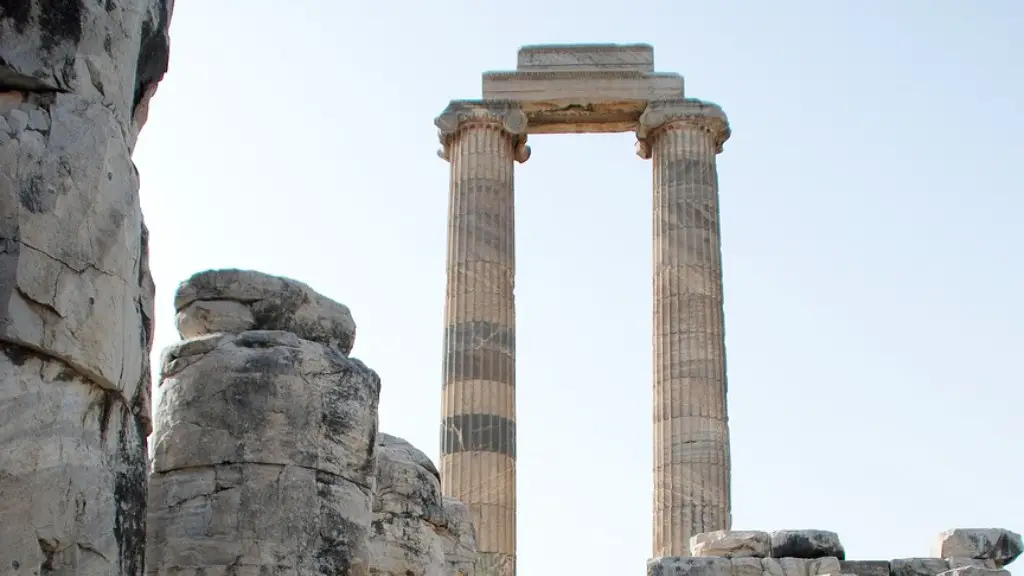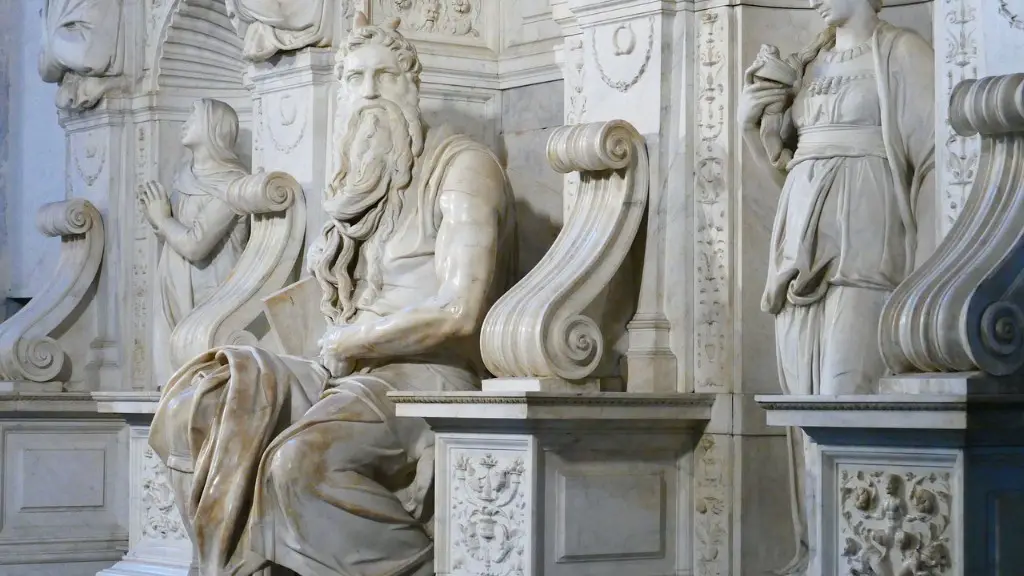Cross roads, in Ancient Rome they served a multitude of functions, from religious activities to strategic military posts. Ancient Rome had a very developed centralized system of roads, strategically placed in order to gain control over its vast and diverse empire. The power of crossroads in Ancient Rome was such that some cities rose and declined based on their access to different roads.
Crossroads served religious functions, such as providing rituals and ceremonies related to divinity and honoring the gods. Many of the emperor’s acts, such as the conferring of title or the awarding of a consulship, took place at the crossroads. It was believed that these activities, done at the crossroads, would bring the blessing of gods to the people of Rome. Crossroads also held major festivals and ceremonies related to gods and emperors.
Crossroads provided commercial and social benefits as well. They provided places where traders and merchants could meet and conduct business, serve as a sort of “marketplace”. Additionally, travelers and traders could rest at crossroads that often were equipped with overnight accommodations and comforts. It also promoted cultural exchange. People from all corners of the empire could meet at the crossroads and share their experiences.
The crossroads also had military functions. Military camps were often set up near crossroads and were manned by specially assigned special garrisons. This provided a means to quickly respond to any crisis or disturbance in the empire. Crossroads also gave way to military and political mobile domination, which helped Ancient Rome gain control of its vast lands.
From an urban development perspective, the crossroads played a vital role in the growth of Ancient Rome. The crossroads served as focal points between the cities and connected different regions of the empire. This allowed rulers to quickly send messages and troops across vast distances and rapidly expand their influence. Besides this, crossroads facilitated the movements of people, their socialization, and, most importantly, the exchange of ideas.
It is, undoubtedly, that the crossroads served different purposes in Ancient Rome. Not only did they secure military control, but they also played an important role in the commercial, religious, and social development of the empire. Even today there are reflections of them, such as Trafalgar square in London, that provide the same benefits for modern societies.
Political Influence
Crossroads played a key role in politics in Ancient Rome. Political ideas and debates could spread quickly between cities due to their centralized locations. The famous Roman roads were constructed usually around crossroads, so the messages and orders of the emperor could be quickly and easily delivered to distant locations of the empire. Furthermore, crossroads specifically marked the borders of territories, so it was easier to keep track of such information.
Crossroads also played an important role in the mobility of both Roman and non-Roman population, who could easily move around territories, taking their culture, language, and religion with them. This greatly influenced the political organizations of Ancient Rome, allowing it to centralize its territories and cultivate a sense of unity.
Likewise, crossroads were important for the military and political domination of Ancient Rome. Roman soldiers could easily be sent out to put down revolts and rebellions, due to their strategic positions at the crossroads. It allowed for quick mobilization, and was critical for Rome’s political expansion.
Lastly, navigating the crossroads was essential for political power in Ancient Rome. Cicero, a famous Roman politician in the first century BC, wrote extensively on the politics of crossroads, noting their importance in politics. He wrote that “If you understood the power of crossroads, you’d understand the power of the ruler.” This was a profound statement, showing the sheer power of crossroads in Ancient Rome.
Influence on Commerce and Trade
Crossroads in Ancient Rome had a large influence on commerce and trade. The centralized system of roads meant that goods and services could move quickly and easily between different parts of the empire. This allowed for larger markets and the expansion of commerce in Ancient Rome. Furthermore, traders and merchants could meet at the crossroads to conduct business, for example, buying and selling goods, exchanging currency, and forming trading networks.
The access to trade networks was highly influential for both Roman and non-Roman populations. Goods could easily be imported from other provinces and bring wealth to those cities or regions. Furthermore, traders were able to quickly establish ties with other traders from distant empires, furthering Rome’s influence.
The access to trade networks was not just important for merchants and traders, but also for non-Roman populations. Non-Roman peoples, such as the Celts, could use these trades to import Roman goods and services into their own economies. This allowed for the growth of wealth and culture in non-Roman populations as well.
The crossroads also allowed for the spread of ideas and new technologies. Traders and merchants brought knowledge of new technologies and practices from other parts of the world, which helped to cultivate innovation in Ancient Rome.
In conclusion, crossroads were essential for the economic and social development of Ancient Rome. They allowed for the growth of commerce and trade, expanding the empire’s economic power and influence.
Religious Influence
Crossroads had a strong religious influence in Ancient Rome. Numerous religious sites, such as temples and shrines, were built at the crossroads, placing these sites at the center of religious activity in the cities or provinces. It was believed that gods were present in these sites, and so religious ceremonies were performed at the crossroads.
The cult of the emperor was also very important in Ancient Rome, and many of the emperor’s activities were carried out at the crossroads. It was believed that the gods would bless the emperor and the citizens of Rome if such ceremonies were done at the crossroads. Furthermore, many important emperors, such as Augustus, carried out religious ceremonies at the crossroads, strengthening the legacy of the emperor’s cult in the Roman empire.
Furthermore, sacred groves and pilgrimages were often associated with the crossroads. Pilgrims would visit such sites to receive a blessing from the gods, such as fertility, good luck, or protection in battle. This was a common practice among Romans, and the religious power of the crossroads increased because of this.
In conclusion, crossroads had a profound religious influence in Ancient Rome. The gods were believed to be present in such sites, and the emperor’s cult was further strengthened by religious ceremonies taking place at the crossroads. Pilgrims would also visit them, hoping to receive a blessing from the gods and increase their religious life.
Economic Consequences
The crossroads had major economic consequences for Ancient Rome. They provided a link between the different regions of the empire, which greatly increased Rome’s economic power. The centralized system of roads facilitated the transportation of goods and services, allowing Rome to develop vast and extensive trade networks.
This had an influence on the cities and regions of Ancient Rome as well. Cities that were close to the crossroads were able to access larger markets, bringing wealth and resources to their inhabitants. Furthermore, the crossroads allowed for the easy transportation of resources, such as grain and livestock, to other parts of the empire.
The increased wealth and resources brought about by the crossroads had a strong influence on Roman culture as well. Social and cultural activities, such as festivals and public spectacles, were held at the crossroads, bringing together different peoples from around the empire and giving rise to new cultural practices.
In conclusion, the crossroads had a major influence on the economy of Ancient Rome. It enabled the growth of trade networks, brought new resources and wealth to different cities, and allowed for the spread of culture and social activities.
Strategic Significance
The strategic significance of crossroads in Ancient Rome cannot be overstated. They provided a critical link between the different parts of the empire, allowing for quick and easy communication between the cities and territories. This was essential for the military domination of Ancient Rome, allowing for the rapid mobility of troops and supplies.
Crossroads were also utilized for political control. They served as the focal points for the governmental control of the territories, with soldiers stationed at the crossroads to keep watch and prevent rebellion or disorder. The presence of these soldiers also showed the military and political power of Ancient Rome.
Lastly, crossroads were used extensively by the strategic planners of Ancient Rome. They planned centuries-long campaigns and strategies around the crossroads, utilizing them to its fullest potential. This helped the Roman forces to gain control over distant territories and further the influence of the empire.
In conclusion, the strategic significance of crossroads in Ancient Rome cannot be denied. Their presence allowed for the rapid communication and mobilization of resources, keeping the Roman forces in control and helping it to expand its influence far and wide.
Architecture
Crossroads were a unique form of architecture in Ancient Rome. They were composed of a large open area where travelers, traders, and merchants could rest and conduct their activities. Crossroads were also well-equipped with overnight accommodations, providing a form of convenience to visitors. Furthermore, many crossroads were decorated with marble, sculptures, and inscriptions honoring important leaders or gods.
The architecture at the crossroads was unique and innovative. The open area served as a sort of “microcosm” for the layouts and organization of Ancient Rome. This allowed for cultural exchange and the sharing of ideas between different regions and cities. Furthermore, the architectural design of the crossroads gave an air of grandeur and majesty to the empire, a reminder of the strength and power of Ancient Rome.
The architectural design of the crossroads also served to reflect the Roman dominance in the territories. The architecture at the crossroads was often a symbol of power and authority, serving as a reminder of Roman control. This was especially true in the military camps, where the architecture served as a visual representation of the Roman forces and their strength.
In conclusion, the architecture at the crossroads was a unique way of expressing the power and authority of Ancient Rome. It provided a form of cultural exchange and it served as a symbol of the strength and dominance of the empire. It is evidence of how important crossroads were for the organization and layout of Ancient Rome.
